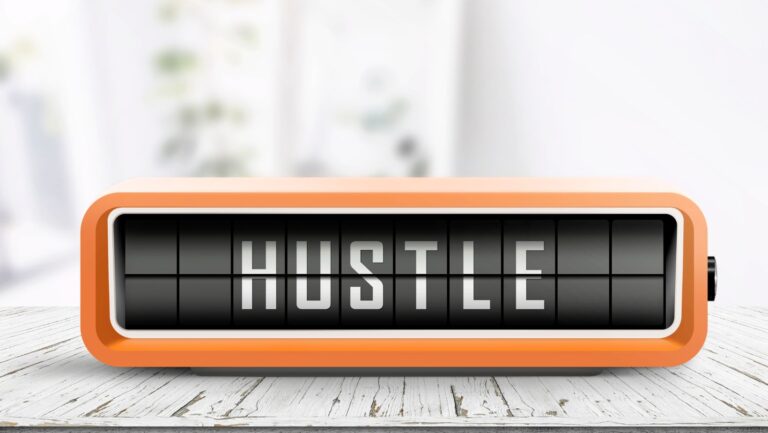Looking to boost your income without pouring thousands into a new business? Low-cost side hustles are a way to test ideas, earn extra cash, and build flexibility into your weekly budget. Whether you want to make use of the gig economy, sell skills online, or offer local services, there are plenty of practical options you can start right away.
Below, we look at five realistic side hustles you can get off the ground this weekend, what they involve, the likely costs, and how people often fund small startup expenses.
1. Food Delivery Driving
One of the fastest ways to start earning extra money is through food delivery. Platforms like Uber Eats, DoorDash, and Menulog continue to grow across major cities and regional hubs, giving drivers flexibility to log in and work when it suits them.
Startup costs:
- Access to a car, scooter, or bicycle
- Fuel or maintenance
- A smartphone and a reliable data plan
- Optional insulated delivery bag ($30–$80)
For drivers using a car, costs can be higher with registration and insurance. But those already with a vehicle ready to go often spend less than $100 to get set up.
Earnings: Depending on the city and hours worked, most delivery drivers make between $20–$35 per hour before expenses.
2. Airtasker and Local Odd Jobs
If you have skills in handyman work, cleaning, moving, or even tech troubleshooting, Airtasker is a strong platform to connect with locals who need help. Listings range from assembling flat-pack furniture to setting up home Wi-Fi networks.
Startup costs:
- Airtasker account setup (free, but Airtasker takes a 15–20% service fee per task)
- Tools or equipment if your hustle requires it (some workers borrow or rent before buying)
Earnings: Taskers can set their own rates, but small jobs typically pay $50–$150. Consistency comes from building reviews and repeat clients.
3. Selling Crafts or Vintage Goods Online
For those with creative skills, Etsy, Shopify, and Facebook Marketplace are go-to platforms for selling crafts, art, or vintage finds. Popular niches include handmade jewellery, digital art, personalised gifts, and second-hand clothing.
Startup costs:
- Materials (e.g., beads, canvases, fabrics) — many start with less than $200 in stock
- Marketplace listing fees (Etsy charges a $0.28 AUD listing fee per item, plus 6.5% transaction fee)
- Basic packaging for shipping orders
Earnings: Varies widely. Sellers often start small, but those who build a recognisable shop can earn a consistent side income over time.
Tip: To get your craft or resale shop moving, some sellers take out a small loan to cover stock or marketing costs. Even a few hundred dollars can help secure materials in bulk and lower per-item costs.
4. Pet-Sitting and Dog Walking
Pet ownership continues to climb, and many owners are looking for reliable walkers or sitters when they’re busy or away. Apps like Mad Paws and PetCloud connect sitters with clients, but word-of-mouth in your neighbourhood can also work just as well.
Startup costs:
- Pet-sitting insurance ($150–$300 annually, optional but recommended)
- Basic advertising, such as flyers or local Facebook ads
- Leash, treats, or pet care supplies ($50–$100 to start)
Earnings: Dog walkers usually charge $20–$35 per 30-minute walk, while overnight pet-sitting can bring in $40–$70 per night.
5. Freelance Services Online
If you have digital skills — writing, design, coding, or admin support — you can find quick projects on Fiverr, Upwork, or directly through LinkedIn. Freelancing lets you work from home, set your rates, and scale over time.
Startup costs:
- Noe beyond a laptop and an internet connection
- Optional: Canva Pro ($20/month) or Adobe Creative Cloud if you need advanced tools
Earnings: Beginners often start at $15–$30 per hour, but experienced freelancers can scale into $50+ hourly rates once they have steady clients.
Funding Your Side Hustle: What If You Need Extra Cash?
Even low-cost hustles come with small startup expenses — from insurance for pet-sitting to tools for Airtasker jobs. For many, covering these upfront costs is the hardest step.
Small loans can play a role here. For example, the No Interest Loan Scheme (NILS) lets eligible people borrow up to $2,000 for essentials, repaid fortnightly without fees or interest. This can cover things like a second-hand bike for deliveries or materials for an online shop.
And for those with slightly bigger needs, the StepUP Loan (offered in partnership with NAB and Good Shepherd) can provide between $800 and $3,000 at a low fixed interest rate, with no fees. While not everyone will qualify, it’s a useful option if you’re trying to move beyond very small side hustles into something that requires a bit more upfront investment.
Final Thoughts
The best side hustle for you depends on your skills, time, and appetite for risk. Food delivery offers fast, flexible income, while freelancing and online selling may take longer to build but can become steady streams. Pet-sitting and Airtasker tasks are great entry points if you prefer working locally and in person.
Don’t let small startup costs hold you back. With the right planning, even a few hundred dollars invested in tools, insurance, or advertising can set you on the path to steady extra income. Whether funded through savings, small loans, or community lending programs, the key is starting lean and scaling only once you see consistent demand.





